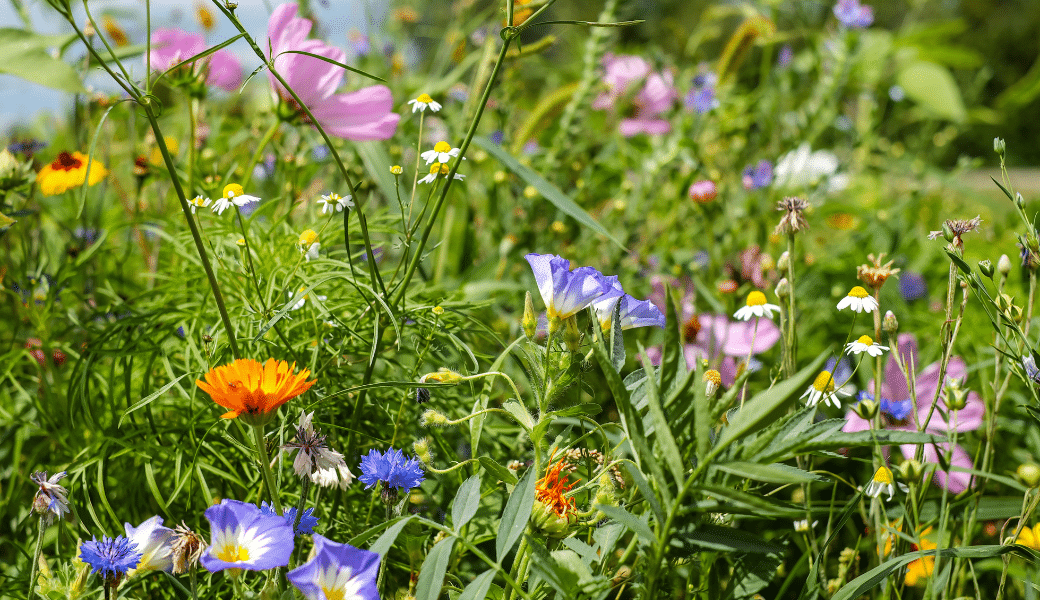5 Ways to Make Your NYC Garden More Nature Friendly
By Natural Areas Conservancy on May 24, 2024

By Natural Areas Conservancy on May 24, 2024

It’s spring in New York City! It’s that time of year when many New Yorkers with a green thumb are dusting off their gardening gloves and contemplating their roster of perennials. Whether you’re a member of a community garden, an attentive parent of potted plants, or have access to a yard, as a gardener in NYC, there are ways you can maximize the ecological benefits of your green space and reduce harm to the environment.
Read below for our list of tips to make your garden eco-friendly!
Fostering native species is incredibly important for a healthy environment. Over time, our native plants have adapted to the needs of local wildlife, providing ideal food and shelter. Additionally, adding native plant diversity to your garden creates a more resilient ecosystem that can endure disturbances. Try planting native species like blue aster, bearberry, virginia rose, or bottlebrush grass (to name just a few). Check out NYC Parks native species guide for planting. It’s also helpful to look at the USDA plant hardiness zone for your specific location. This will tell you the coldest and hottest temperatures a plant can endure in your area.
On the flip side, beware of non-native plants like English ivy, Japanese barberry, day lilies, and burning bush. These plants can creep out of your garden and degrade nearby natural areas.
A grassy lawn might seem like the easy choice for your backyard, but they provide little ecological benefit as they are biodiversity deserts and require a large amount of water for upkeep. Think about how much space you and your family really need for grass. Plant around the edges and under trees with beautiful shade, or sun-loving perennials and shrubs. It will reduce your carbon footprint and you can spend less time mowing – and more time enjoying your space!
Birds, bees, and butterflies can thrive in your garden if they have access to their favorite flora! For example, milkweed is a food source for monarch butterflies and the only host plant that they can lay their eggs in. Think about plants that can provide multiple benefits to our pollinators: ones with good nectar sources, night-blooming flowers that attract moths, or tubular brightly colored native flowers that draw in hummingbirds!
There are dozens of plants suitable for pollinators in the New York area. Check out Xerces Society’s comprehensive list for Northeast America.
In the fall, you may be tempted to clear out all the fallen leaves in your garden and cut back your plants. But this natural mulch and dried stems provide vital hibernation sites for wildlife such as solitary bees and wasps, and the place where some of our butterflies and moths overwinter! In particular, leave the seed heads and stems of your plants, as they are important food for birds like chickadees and nests for bees.
Something else to keep in mind is to limit use of chemicals and pesticides in your garden, which can be harmful to wildlife and have lasting, irreversible damage. We recommend following an Integrated Pest Management approach if you’ve determined an unwanted plant or insect is encroaching on your garden.
Take advantage of rainy days and collect that water for later use by installing a rain barrel. NYC Department of Environmental Protection (DEP) hosts rain barrel giveaways each year, that are distributed by your neighborhood council member. According to the DEP, 40% of NYC household’s water use in the summer is used for outdoor chores.
Your garden can do its part in capturing stormwater, too. Maximizing soil and plants will increase the amount of water absorption and help limit floods. Try to avoid hardscape elements like cement that will have the opposite effect.
We hope these tips help you create your NYC eco-friendly oasis! You might not think that your garden has the potential to make an impact, but by following these suggestions you can contribute to NYC’s “habitat corridors”—pathways that help connect birds and pollinators in developed parts of the city to our city’s natural areas.
Curious to learn more about the power of nature? Read our recently published Climate Report that outlines the benefits of natural areas.